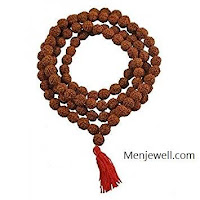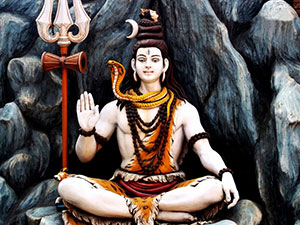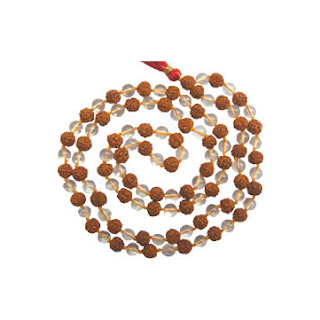Why Lord Shiva Wears Rudraksha? - menjewell.com
Why Lord Shiva Wears Rudraksha?
Rudra’ is beautiful name of our beloved and most powerful
God Shiva and ‘Aksh’a means tears.
Origin: According to Shiva Purana, Lord Shiva once went
into deep meditation for the happiness of all living creatures. When he woke
up, he opened his majestic eyes and tear drops fell on the Earth. These tear
drops took the form of seeds that later on became Rudraksha trees. Rudraksha
henceforth meant ‘The Tear of Lord Shiva‘. The dry seed-capsules from the
Rudraksha tree form Rudraksha beads are thus used as prayer bLord Shivaeads and
also worn for innumerable benefits.
We have always seen the idols or images of Lord Shiva
wearing Rudraksha. Lord Shiva is always depicted wearing Rudraksha beads on his
head, arms and hands. With this, there came up the religious and spiritual
significance of Rudraksha. It is believed that the seed of Rudraksha contains
the secrets of the entire evolution of Cosmos within it. Disciples devoted to
Lord Shiva always wear Rudraksha to lead a peaceful life and also for deeper
meditation. It helps maintain good health, gain self-empowerment and lead a fearless
life. Rudraksha beads are renowned for their divine protection and are worn on
the body individually or as a chain (Mala).
Scientifically, the holy Rudraksha tree is known as
‘Elaeocarpus ganitrus Roxb’ and belongs to the family Tiliaceae, a huge
evergreen broad-leaved tree with a wide crown. Attitudinally, its habitat
starts from sea-coast and goes up to 2,000 meters. Geographically it is found
growing naturally and abundantly in tropical and subtropical areas. It is
perennial in habitat and almost 15 to 60 meter in height. This tree grows fast
and carries these seeds/fruits within seven years. Such trees are mostly found
in abundance in Nepal, in the Himalayan slopes and also in parts of India,
Indonesia and Malaysia. Its English name is Utrasum Bead Tree. In Indonesia the
Rudraksha Tree is called Ganitri Tree or Jenitri Tree. Around 70% of the
Rudraksha trees are found in Indonesia, 25% in Nepal and 5% in India.




Comments
Post a Comment